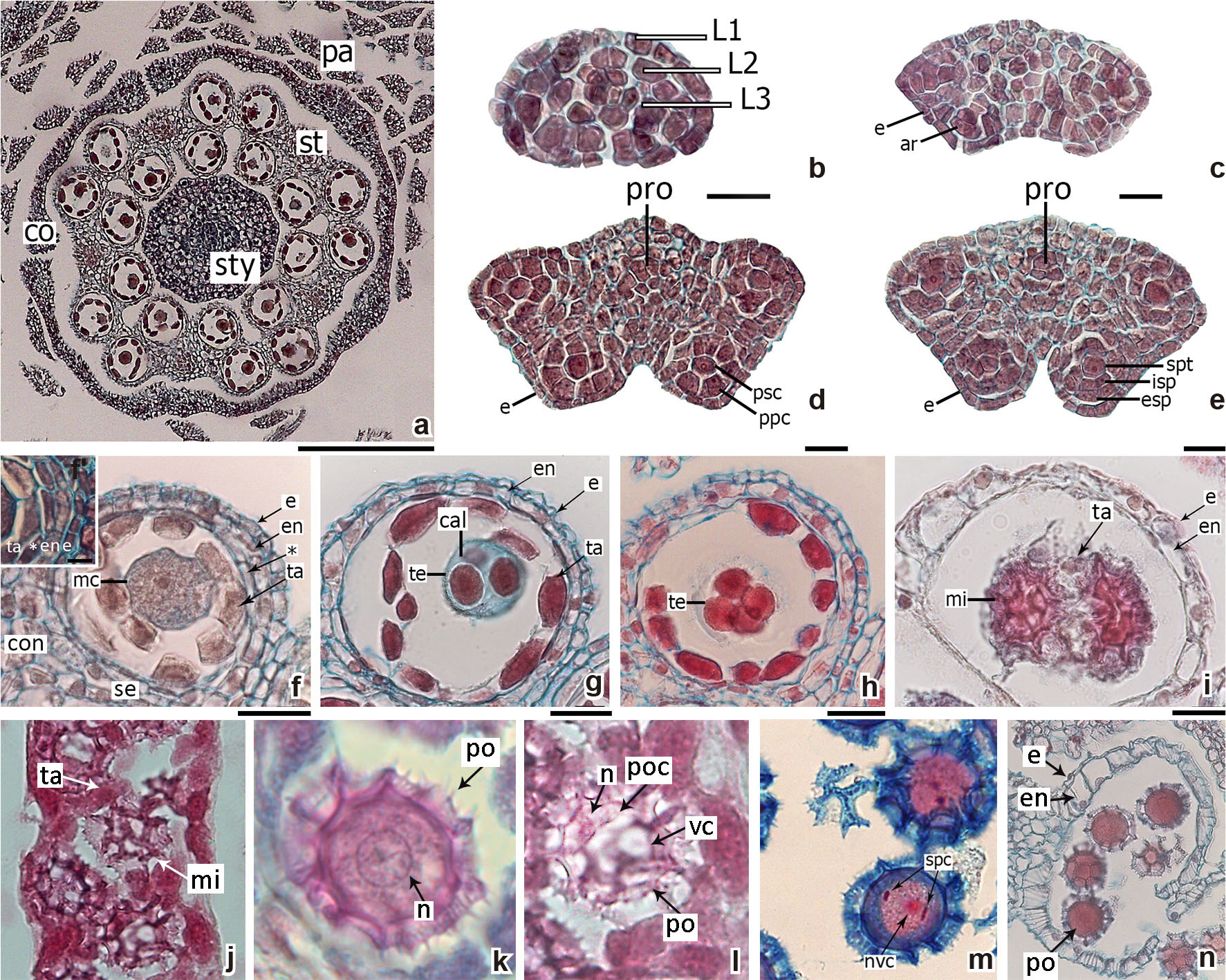Abstract
Lessingianthus plantaginoides (Vernonieae, Asteraceae) is a small natural tetraploid shrub that inhabits rocky highlands from South America. The population studied inhabits and covers an extensive region of a private reserve with high local biodiversity and animal and plant endemisms. With the purpose of providing insights into the cyto-embryology of this tetraploid species, the aims of this study were: to perform an ontogenetic study of the male and female gametophytes of L. plantaginoides; to carry out detailed meiotic analysis and evaluate the fertility of this species; to document and provide highlights on taxonomic implications of their reproductive aspects. Lessingianthus plantaginoides presented the following male and female gametophyte traits: dicotyledonous type of anther wall development, tetrahedral tetrads, 3-celled mature pollen grains; development of the chalazal megaspore, monosporic embryo sac and Polygonum type of megagametophyte development. The meiotic behavior was regular, the spores were tetrads of equal size and the pollen grains were highly stainable. Lessingianthus plantaginoides is a highly diplodized autotetraploid that reproduces sexually and has high meiotic regularity; which is apparently responsible for its colonization potential. It now seems certain that polyploid speciation plays a significant role in the establishment and diversification of the genus.
Key words
embryology; gametophyte development; polyploidy; Vernonieae

 Thumbnail
Thumbnail
 Thumbnail
Thumbnail
 Thumbnail
Thumbnail
 Thumbnail
Thumbnail



